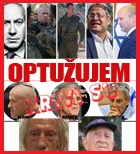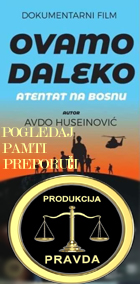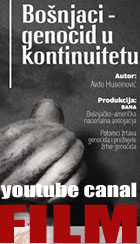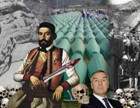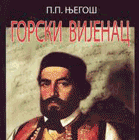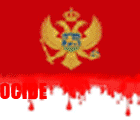Historija Bosnjaka
We Bosnian Muslims – Bosniaks should use this occasion to remind ourselves about the Hijrah and about the eleven genocides against Bosnian Muslims - Bosniaks
ELEVEN GENOCIDES AGAINST BOSNIAKS
For BOSNJACI.net:
By Emir RAMIC
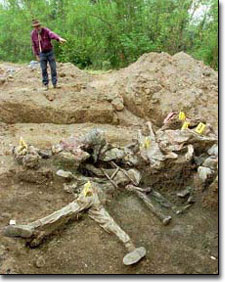 We Bosnian Muslims – Bosniaks should use this occasion to remind ourselves about the Hijrah and about the eleven genocides against Bosnian Muslims - Bosniaks.
We Bosnian Muslims – Bosniaks should use this occasion to remind ourselves about the Hijrah and about the eleven genocides against Bosnian Muslims - Bosniaks.
Crimes of genocide against Bosniaks in the Balkans are part of their history. These crimes of genocide last over three centuries, originated from both the East and the West sides, depending on the historical period. The causes of genocides against Bosniaks are, in principle, ideological ones, but there are other as well: first of all fight for territories (cf. \"space for living\", Lebensraum, as used by Nazi), and then plans for extermination of people.
Crimes of genocide have their historical continuity from the second half of the 17th century. While some of them were results of genocidal acts of Venetian and Austrian troops, for the most part they have been result of Serbian and Montenegrin continuous politics since the beginning of the 17th century until the present days.
That is to say, physical and spiritual extermination and destruction committed by Serbs and Montenegrins against Bosniaks in the Balkans are motivated by Serbian genocidal ideology founded on: Kosovo Myth, Njegos\' epics on annihilation of the converts to Islam, as well as lies and political propaganda. This ideology was developed in works of Njegos (\"Gorski vijenac\", \"The Mountain Wreath\") and Ilija Garasanin (\"Nacertanije\", 1844), with contributing motives from Vuk Karadzic\'s \"Jezicki nacionalizam\" and religious doctrine of the Serbian Orthodox Church. These criminal programs have been complemented in the recent past by Stevan Moljevic\'s \"Programski dokumenti\" of June 30, 1941 (an ideologist in the Draza Mihailovic\'s Chetniks Movement), Resolutions at the 1943 Chetniks\' Conference in village Sahovici, and last \"Memorandum\" by SANU - Srpska Akademija Nauka i Umetnosti (Serbian Academy of Science and Arts) - thus giving a framework for this criminal construction.
Historiographic, philosophical and literature works of Vasa Cubrilovic, Dobrica Cosic, Milorad Ekmecic, Vojislav Djuretic, Vasilije Krestic, Mihailo Markovic and others provided intellectual and spiritual foundation to this genocidal politics.
The last genocide committed against Bosniaks (1992-1995) by Serbia and Montenegro was planned by: Military top of the former Yugoslavia (SFRJ) (usurped by Serbia), State Leadership of Serbia, Serbian political opposition, Serbian Orthodox Church, Ministry of Internal Affairs of Serbia, SANU, as well as corresponding powers in Montenegro.
All plans for \"Greater Serbia\" and Chetniks\' genocidal programmatic documents state that creation and organization of homogenous Serbia (ethnically pure Serbian state),
comprising \"all territories inhabited by Serbs\", is first and primary duty of \"all\" Serbs.
THE FIRST GENOCIDE
The first genocide against Bosniaks occurred during and after the Great Vienna War, between Ottoman and Austrian Empires.
As Ottomans lost in this war all territories and power in Hungary, Slavonia, Lika, Krbava, Dalmatia, Bay of Kotor, all Moslem-Bosniaks who did not timely withdraw from these areas and territories to Bosnia and other areas south of Sava and Danube river were killed, expelled, assimilated or forcefully converted to Christianity. All cultural and sacral objects were destroyed and valuables looted. Precise and clear evidence about conversion to Christianity exist in Franciscan archives in Dalmatia, Lika, Slavonia. Various toponyms and last names are today only signs that Bosniaks had inhabited these areas.
For the first genocide, it is most important to say that while Ottoman and Austrian Empires waged war, Bosniaks perished.
THE SECOND GENOCIDE
The second genocide against Moslem-Bosniaks occurred on Orthodox Christmas Eve of year 1711. So called \"istraga poturica\" (\"annihilation of the converts to Islam\") was carried out on that night. About 1,000 Muslims, living in the area of \"The Old Montenegro\" comprising four regions called nahija and with Cetinje as a capital, were killed then. The Orthodox Church created strategy, promoted idea and was actor of this second genocide. This assertion is based on the facts that the Christmas Eve is the greatest Christian holiday and that the 19th century Bishop and poet Petar Petrovic Njegos \'celebrated\' and documented the annihilation in his work \"The Mountain Wreath\". With this poem, he provided epical background and paradigm for all future genocides against Muslims of Serbia, Sandzak, Montenegro, and Bosnia and Herzegovina.
All motives for genocide are celebrated in \"The Mountain Wreath\"; e.g., Njegos expressed and inflamed the religious hatred toward Muslims in verse:
\" Odza rice na ravnom Cetinju – zaudara zemlja Mu’amedom ” ! ! !
(\"The Imam roars upon Cetinje plain, the soil smells of Mohammed\")
THE THIRD GENOCIDE
The third genocide against Bosniaks occurred between 1804-1820 as a result of The First and The Second Serbian Uprising. Serbian historian an diplomat Stojan Novakovic described this genocide as \"general extermination of Turks-Muslims from population\".
The third genocide against Muslims sees historians, politicians, and poets (such as Njegos) of that time joining The Orthodox Church, which itself plays the key role from time of the second genocide.
THE FOURTH GENOCIDE
The fourth genocide against Bosniaks occurred between 1830-1867 as a result of the 1830 Hati-s-serif and its Annex of 1830. This document gave Serbia the vassal autonomy within the Ottoman Empire. Subsequently, all Bosniaks were expelled from Belgrade, Uzice, Sokol, Sabac. Expelled Muslims were settled by the Porte in Bosnia, in two newly formed settlements: Upper and Lower Azizia, i.e., Bosanski Samac and Orasje.
THE FIFTH GENOCIDE
The fifth genocide against Bosniaks occurred after The Treaty of Berlin 1878. The Article XXVI of The Treaty recognized the independence of Montenegro. It also expanded its territory into Herzegovina. The Article XXXIV recognized the independence of the Principality of Serbia, subject to the conditions set forth in the following Article XXXV: \"In Serbia the difference of religious creeds and confessions shall not be alleged against any person as a ground for exclusion or incapacity in matters relating to the enjoyment of civil or political rights, admission to public employments, functions, and honors, or the exercise of the various professions and industries, in any locality whatsoever. The freedom and outward exercise of all forms of worship shall be assured to all persons belonging to Serbia, as well as to foreigners, and no hindrance shall be offered either to the hierarchical organization of the different communions, or to their relations with their spiritual chiefs.\" Serbia expanded its territory over Nis, Toplica, i Vranje areas. However, Serbia broke the Article XXXV, i.e., the conditions for its independence, in respect to religious, civil, and political freedom of Muslims. They were killed in and expelled from Belgrade, Sabac, Uzice, Sokol, Nis, Pirot, Vranje, and their cultural and sacral objects destroyed.
THE SIXTH GENOCIDE
The sixth genocide against Bosniaks happened after the provinces of Bosnia and Herzegovina had been occupied and administered by Austria-Hungary. During and after the occupation Bosniaks were subject to emigration to Sandzak, Kosovo, Macedonia, which stayed under the Ottoman administration after The Treaty of Berlin 1878. The result was the sharp decrease of Muslim population in total population of Bosnia and Herzegovina. Historians\' citation that between 1879 and 1910 the percentage of Muslim population in Bosnia and Herzegovina decreased by 7% is even more tragic when viewed in absolute figures, because Bosniaks are not numerically big nation.
THE SEVENTH GENOCIDE
The sewenth genocide against Bosniaks occurred in 1912 - 1913 in Plav-Gusinje area (South Sanjak or North Montenegro). The genocide against Bosniaks occurred in Sanjak, part of Montenegro with the forcible conversion of Muslim to Christianity in areas of Plav and Gusinje. This genocide is a direct consequence of The First and The Second Balkan Wars. It was the seventh genocide against Muslims in (Central-West) Balkans and the first against Bosniaks in Sanjak. This time, the most prominent Bosniaks of this region, between 800 - 1200 peaple, were executed.
THE EIGHT GENOCIDE
The eight genocide against Bosniaks occurred in 1919 in Plav-Gusinje area, or better to say, it was repeated in this area after the forcible conversion to Christianity in 1912-1913.
This time, the most prominent Bosniaks of this region, about 450 of them, were executed. This has been an untold and unwritten story since then, a good indication that all Bosniak\'s historians so far failed to document this genocide, and which we here cite as The Eight, or the second one in the Plav -Gusinje Region with just 6-7 years apart.
THE NINETH GENOCIDE
The Ninth genocide against Muslim-Bosniaks lasts from the formation of the Kingdom of Serbs, Croats, and Slovenes in 1918 until its collapse in 1941. In this period the lives of Bosniaks were treated as worthless, and especially difficult situation was for Muslims in Sandzak and Herzegovina. One example is village Sahovici near Bijelo Polje where about 600 Muslims were killed on November 7, 1924, without any reason, guilt, and cause. Bosniak population in Eastern Herzegovina suffered from execution squads known as \"(Serbian) King\'s Komite\". Data analysed attribute to them about 3,000 unresolved murders of Muslims-Bosniaks. All these killings, expulsions and intimidation changed the ethnical profile of the Eastern Herzegovina to the Bosniaks\' detriment.
THE TENTH GENOCIDE
The tenth genocide against Bosniaks occurred during the WWII, 1941-1945. According to some estimates, about 106,000 Bosniaks died, mostly civilians slaughtered by Chetniks and their daggers. I means that about 8.3% of Muslim population perished in this period. These are still raw data, and full details of suffering are not yet sufficiently investigated and researched. Consequently, I hereby appeal to Bosniak\'s historians and intellectuals skilled in writing to get down to work. As in old saying, \"what is not recorded in writing, is not happened\"! The complete, precise, fantastically powerful and easily web-accessible archive of the ICTY, especially testimonies and cross-examinations of the Prosecutor\'s expert witnesses, many of them historians and intellectuals who are often doing more goods to us Bosniaks than sometimes we ourselves do, is one of the places to start.
THE ELEVENTH GENOCIDE
The eleventh genocide against Bosniaks occurred in the period 1992-1995 during aggression on Bosnia and Herzegovina by Serbia, Montenegro, and Croatia.
This time it was simultaneous and collaborative commission of genocide by Serbia, Montenegro, and Croatia. It never happened before, in previous ten genocides, that they together and simultaneously committed crimes.
This genocide is the most gruesome, cruel, brutal and the largest in scale than all previous ones. And that is amplified when put in historical perspective of it happened at the end of the 20th century in the midst of Europe.
All Serbian and Montenegrin that could creep, were included in committing this crime, including the top state, governmental, political, military, and Church structures. Also, the crucial, key contribution to this crime of genocide came from Serbian and Montenegrin intellectual establishment. The obvious intention was the formation of The Greater Serbia along Karlobag-Virovitica line as was long ago planned in the programs of Garasanin, Moljevic, and the last Memorandum of SANU (Serbian Academy of Science and Arts).
And Croatia, too, wanted to, so to speak, \'make a profit\' in this criminal aggression. Its aspirations to Greater Croatia corresponded with already known crimes of Croatian warriors against Bosniak civilians in Stupni Do, Ahmici and other places.
Sufferings of Bosniak civilians are enormous in lost lives so one can call it a cataclysm, or gernika, as somebody said. It should be told that this aggression on Bosnia and Herzegovina also inflicted an urbicide and culturecide.
For this genocide, it is important to emphasise that this time Bosniaks resisted military and organizationally, which had not been the case in the previous ten genocides. Bosniak people, although unarmed in the beginning and surrounded by deceit, found the strength and resisted the aggressors. And how the latter felt the Bosniak strength!
At the end, let me conclude with the statement that nothing anymore is the same as before and Bosniaks will never again allow to be slaughtered like lambs, and they demonstrated in this fight against aggressors that they will, know how to and can counter strike.
By Emir RAMIC
The New Hijri Year has just started. In Islam there is no special religious ceremony to mark the New Year. However, since our religious calendar is the Hijri calendar, it is good to remind ourselves about the meaning and significance of Hijrah at this time. We should talk about Prophet’s Hijrah from Makkah to Madinah that took place in the year 622 CE. We should talk about its meaning and significance and we should also talk about the general concept of Hijrah in Islam.
The Arabic word Hijrah is often translated as “exile, exodus, flight or migration”. Its meaning is, however, much more dynamic and active. It means “to leave, to move, to shun and quit”. It is especially used for an intentional transfer of residence, but in the Qur’an it is also used to mean leaving a wrong condition and moving to a better condition, even though it may involve some difficulty.
Hijrah is a principle that is integral to Islam. It transforms a Mu’min from a mere believer to a Mujahid, the one who struggles for his faith. It is for this reason that the Qur’an has used in many places the words Iman, Hijrah and Jihad together.
Muslims chose Hijrah as the focal point to reckon their chronology. In physical terms Hijrah was a journey between two cities about 300 miles apart, but in its grand significance it marked the beginning of an era, a civilization, a culture and a history for the whole mankind. Islam progressed not only from the physical Hijrah, but because Muslims took Hijrah seriously in all its aspects and dimensions.
The Arabic word Hijrah is often translated as “exile, exodus, flight or migration”. Its meaning is, however, much more dynamic and active. It means “to leave, to move, to shun and quit”. It is especially used for an intentional transfer of residence, but in the Qur’an it is also used to mean leaving a wrong condition and moving to a better condition, even though it may involve some difficulty.
Hijrah is a principle that is integral to Islam. It transforms a Mu’min from a mere believer to a Mujahid, the one who struggles for his faith. It is for this reason that the Qur’an has used in many places the words Iman, Hijrah and Jihad together.
Muslims chose Hijrah as the focal point to reckon their chronology. In physical terms Hijrah was a journey between two cities about 300 miles apart, but in its grand significance it marked the beginning of an era, a civilization, a culture and a history for the whole mankind. Islam progressed not only from the physical Hijrah, but because Muslims took Hijrah seriously in all its aspects and dimensions.
 We Bosnian Muslims – Bosniaks should use this occasion to remind ourselves about the Hijrah and about the eleven genocides against Bosnian Muslims - Bosniaks.
We Bosnian Muslims – Bosniaks should use this occasion to remind ourselves about the Hijrah and about the eleven genocides against Bosnian Muslims - Bosniaks.Crimes of genocide against Bosniaks in the Balkans are part of their history. These crimes of genocide last over three centuries, originated from both the East and the West sides, depending on the historical period. The causes of genocides against Bosniaks are, in principle, ideological ones, but there are other as well: first of all fight for territories (cf. \"space for living\", Lebensraum, as used by Nazi), and then plans for extermination of people.
Crimes of genocide have their historical continuity from the second half of the 17th century. While some of them were results of genocidal acts of Venetian and Austrian troops, for the most part they have been result of Serbian and Montenegrin continuous politics since the beginning of the 17th century until the present days.
That is to say, physical and spiritual extermination and destruction committed by Serbs and Montenegrins against Bosniaks in the Balkans are motivated by Serbian genocidal ideology founded on: Kosovo Myth, Njegos\' epics on annihilation of the converts to Islam, as well as lies and political propaganda. This ideology was developed in works of Njegos (\"Gorski vijenac\", \"The Mountain Wreath\") and Ilija Garasanin (\"Nacertanije\", 1844), with contributing motives from Vuk Karadzic\'s \"Jezicki nacionalizam\" and religious doctrine of the Serbian Orthodox Church. These criminal programs have been complemented in the recent past by Stevan Moljevic\'s \"Programski dokumenti\" of June 30, 1941 (an ideologist in the Draza Mihailovic\'s Chetniks Movement), Resolutions at the 1943 Chetniks\' Conference in village Sahovici, and last \"Memorandum\" by SANU - Srpska Akademija Nauka i Umetnosti (Serbian Academy of Science and Arts) - thus giving a framework for this criminal construction.
Historiographic, philosophical and literature works of Vasa Cubrilovic, Dobrica Cosic, Milorad Ekmecic, Vojislav Djuretic, Vasilije Krestic, Mihailo Markovic and others provided intellectual and spiritual foundation to this genocidal politics.
The last genocide committed against Bosniaks (1992-1995) by Serbia and Montenegro was planned by: Military top of the former Yugoslavia (SFRJ) (usurped by Serbia), State Leadership of Serbia, Serbian political opposition, Serbian Orthodox Church, Ministry of Internal Affairs of Serbia, SANU, as well as corresponding powers in Montenegro.
All plans for \"Greater Serbia\" and Chetniks\' genocidal programmatic documents state that creation and organization of homogenous Serbia (ethnically pure Serbian state),
comprising \"all territories inhabited by Serbs\", is first and primary duty of \"all\" Serbs.
THE FIRST GENOCIDE
The first genocide against Bosniaks occurred during and after the Great Vienna War, between Ottoman and Austrian Empires.
As Ottomans lost in this war all territories and power in Hungary, Slavonia, Lika, Krbava, Dalmatia, Bay of Kotor, all Moslem-Bosniaks who did not timely withdraw from these areas and territories to Bosnia and other areas south of Sava and Danube river were killed, expelled, assimilated or forcefully converted to Christianity. All cultural and sacral objects were destroyed and valuables looted. Precise and clear evidence about conversion to Christianity exist in Franciscan archives in Dalmatia, Lika, Slavonia. Various toponyms and last names are today only signs that Bosniaks had inhabited these areas.
For the first genocide, it is most important to say that while Ottoman and Austrian Empires waged war, Bosniaks perished.
THE SECOND GENOCIDE
The second genocide against Moslem-Bosniaks occurred on Orthodox Christmas Eve of year 1711. So called \"istraga poturica\" (\"annihilation of the converts to Islam\") was carried out on that night. About 1,000 Muslims, living in the area of \"The Old Montenegro\" comprising four regions called nahija and with Cetinje as a capital, were killed then. The Orthodox Church created strategy, promoted idea and was actor of this second genocide. This assertion is based on the facts that the Christmas Eve is the greatest Christian holiday and that the 19th century Bishop and poet Petar Petrovic Njegos \'celebrated\' and documented the annihilation in his work \"The Mountain Wreath\". With this poem, he provided epical background and paradigm for all future genocides against Muslims of Serbia, Sandzak, Montenegro, and Bosnia and Herzegovina.
All motives for genocide are celebrated in \"The Mountain Wreath\"; e.g., Njegos expressed and inflamed the religious hatred toward Muslims in verse:
\" Odza rice na ravnom Cetinju – zaudara zemlja Mu’amedom ” ! ! !
(\"The Imam roars upon Cetinje plain, the soil smells of Mohammed\")
THE THIRD GENOCIDE
The third genocide against Bosniaks occurred between 1804-1820 as a result of The First and The Second Serbian Uprising. Serbian historian an diplomat Stojan Novakovic described this genocide as \"general extermination of Turks-Muslims from population\".
The third genocide against Muslims sees historians, politicians, and poets (such as Njegos) of that time joining The Orthodox Church, which itself plays the key role from time of the second genocide.
THE FOURTH GENOCIDE
The fourth genocide against Bosniaks occurred between 1830-1867 as a result of the 1830 Hati-s-serif and its Annex of 1830. This document gave Serbia the vassal autonomy within the Ottoman Empire. Subsequently, all Bosniaks were expelled from Belgrade, Uzice, Sokol, Sabac. Expelled Muslims were settled by the Porte in Bosnia, in two newly formed settlements: Upper and Lower Azizia, i.e., Bosanski Samac and Orasje.
THE FIFTH GENOCIDE
The fifth genocide against Bosniaks occurred after The Treaty of Berlin 1878. The Article XXVI of The Treaty recognized the independence of Montenegro. It also expanded its territory into Herzegovina. The Article XXXIV recognized the independence of the Principality of Serbia, subject to the conditions set forth in the following Article XXXV: \"In Serbia the difference of religious creeds and confessions shall not be alleged against any person as a ground for exclusion or incapacity in matters relating to the enjoyment of civil or political rights, admission to public employments, functions, and honors, or the exercise of the various professions and industries, in any locality whatsoever. The freedom and outward exercise of all forms of worship shall be assured to all persons belonging to Serbia, as well as to foreigners, and no hindrance shall be offered either to the hierarchical organization of the different communions, or to their relations with their spiritual chiefs.\" Serbia expanded its territory over Nis, Toplica, i Vranje areas. However, Serbia broke the Article XXXV, i.e., the conditions for its independence, in respect to religious, civil, and political freedom of Muslims. They were killed in and expelled from Belgrade, Sabac, Uzice, Sokol, Nis, Pirot, Vranje, and their cultural and sacral objects destroyed.
THE SIXTH GENOCIDE
The sixth genocide against Bosniaks happened after the provinces of Bosnia and Herzegovina had been occupied and administered by Austria-Hungary. During and after the occupation Bosniaks were subject to emigration to Sandzak, Kosovo, Macedonia, which stayed under the Ottoman administration after The Treaty of Berlin 1878. The result was the sharp decrease of Muslim population in total population of Bosnia and Herzegovina. Historians\' citation that between 1879 and 1910 the percentage of Muslim population in Bosnia and Herzegovina decreased by 7% is even more tragic when viewed in absolute figures, because Bosniaks are not numerically big nation.
THE SEVENTH GENOCIDE
The sewenth genocide against Bosniaks occurred in 1912 - 1913 in Plav-Gusinje area (South Sanjak or North Montenegro). The genocide against Bosniaks occurred in Sanjak, part of Montenegro with the forcible conversion of Muslim to Christianity in areas of Plav and Gusinje. This genocide is a direct consequence of The First and The Second Balkan Wars. It was the seventh genocide against Muslims in (Central-West) Balkans and the first against Bosniaks in Sanjak. This time, the most prominent Bosniaks of this region, between 800 - 1200 peaple, were executed.
THE EIGHT GENOCIDE
The eight genocide against Bosniaks occurred in 1919 in Plav-Gusinje area, or better to say, it was repeated in this area after the forcible conversion to Christianity in 1912-1913.
This time, the most prominent Bosniaks of this region, about 450 of them, were executed. This has been an untold and unwritten story since then, a good indication that all Bosniak\'s historians so far failed to document this genocide, and which we here cite as The Eight, or the second one in the Plav -Gusinje Region with just 6-7 years apart.
THE NINETH GENOCIDE
The Ninth genocide against Muslim-Bosniaks lasts from the formation of the Kingdom of Serbs, Croats, and Slovenes in 1918 until its collapse in 1941. In this period the lives of Bosniaks were treated as worthless, and especially difficult situation was for Muslims in Sandzak and Herzegovina. One example is village Sahovici near Bijelo Polje where about 600 Muslims were killed on November 7, 1924, without any reason, guilt, and cause. Bosniak population in Eastern Herzegovina suffered from execution squads known as \"(Serbian) King\'s Komite\". Data analysed attribute to them about 3,000 unresolved murders of Muslims-Bosniaks. All these killings, expulsions and intimidation changed the ethnical profile of the Eastern Herzegovina to the Bosniaks\' detriment.
THE TENTH GENOCIDE
The tenth genocide against Bosniaks occurred during the WWII, 1941-1945. According to some estimates, about 106,000 Bosniaks died, mostly civilians slaughtered by Chetniks and their daggers. I means that about 8.3% of Muslim population perished in this period. These are still raw data, and full details of suffering are not yet sufficiently investigated and researched. Consequently, I hereby appeal to Bosniak\'s historians and intellectuals skilled in writing to get down to work. As in old saying, \"what is not recorded in writing, is not happened\"! The complete, precise, fantastically powerful and easily web-accessible archive of the ICTY, especially testimonies and cross-examinations of the Prosecutor\'s expert witnesses, many of them historians and intellectuals who are often doing more goods to us Bosniaks than sometimes we ourselves do, is one of the places to start.
THE ELEVENTH GENOCIDE
The eleventh genocide against Bosniaks occurred in the period 1992-1995 during aggression on Bosnia and Herzegovina by Serbia, Montenegro, and Croatia.
This time it was simultaneous and collaborative commission of genocide by Serbia, Montenegro, and Croatia. It never happened before, in previous ten genocides, that they together and simultaneously committed crimes.
This genocide is the most gruesome, cruel, brutal and the largest in scale than all previous ones. And that is amplified when put in historical perspective of it happened at the end of the 20th century in the midst of Europe.
All Serbian and Montenegrin that could creep, were included in committing this crime, including the top state, governmental, political, military, and Church structures. Also, the crucial, key contribution to this crime of genocide came from Serbian and Montenegrin intellectual establishment. The obvious intention was the formation of The Greater Serbia along Karlobag-Virovitica line as was long ago planned in the programs of Garasanin, Moljevic, and the last Memorandum of SANU (Serbian Academy of Science and Arts).
And Croatia, too, wanted to, so to speak, \'make a profit\' in this criminal aggression. Its aspirations to Greater Croatia corresponded with already known crimes of Croatian warriors against Bosniak civilians in Stupni Do, Ahmici and other places.
Sufferings of Bosniak civilians are enormous in lost lives so one can call it a cataclysm, or gernika, as somebody said. It should be told that this aggression on Bosnia and Herzegovina also inflicted an urbicide and culturecide.
For this genocide, it is important to emphasise that this time Bosniaks resisted military and organizationally, which had not been the case in the previous ten genocides. Bosniak people, although unarmed in the beginning and surrounded by deceit, found the strength and resisted the aggressors. And how the latter felt the Bosniak strength!
At the end, let me conclude with the statement that nothing anymore is the same as before and Bosniaks will never again allow to be slaughtered like lambs, and they demonstrated in this fight against aggressors that they will, know how to and can counter strike.
|
Ostali prilozi:
» BOŠNJAČKI SABOR 1993. GODINE – OD VRAĆANJA HISTORIJSKOG IMENA BOŠNJAK
B.net | 28. September 2022 17:06
» ISTAKNUTI ISMAIL-EF. NIKOČEVIĆ BORBU ZA POLITIČKU AUTONOMIJU PLAVA I GUSINJA PLATIO ŽIVOTOM
Rizah Gruda | 13. October 2020 01:02
» TAKO JE GAZIJAMA ARMIJE RBIH GOVORIO BRIGADNI GENERAL RAMIZ ŠUVALIĆ
Amir Hasanović | 27. September 2019 14:40
» 281. OBLJETNICA VELIKE BITKE BOŠNJAKA PROTIV AGRESORA - EVROPSKIH KATOLIKA, POD BANJA LUKOM
Fikret Hafizović | 21. July 2018 13:46
» STRAVIČNE BROJKE DRUGOG SVJETSKOG RATA: SRBA STRADALO 7,5%, HRVATA 5%, A NAJVEĆE ŽRTVE SU BILI BOŠNJACI!
slobodna-bosna.ba | 04. June 2018 21:22
» DRŽIM ZAKLANU GLAVU SINA MUJE, A KOLJAČ NA MENE VIČE: „PUŠĆAJ TU GLAVU“…
Avaz | 02. March 2016 17:34
» ZNAMENITI BOŠNJACI HERCEG STEPHAN KOSAČA I BLAGAJSKO TURBE
Fikret Hafizović | 04. December 2013 01:25
» MILION I PO MUSLIMANA SA BALKANA PROTJERANO JE U ANADOLIJU
Anadolu Agency (AA) | 07. May 2013 14:19 |



